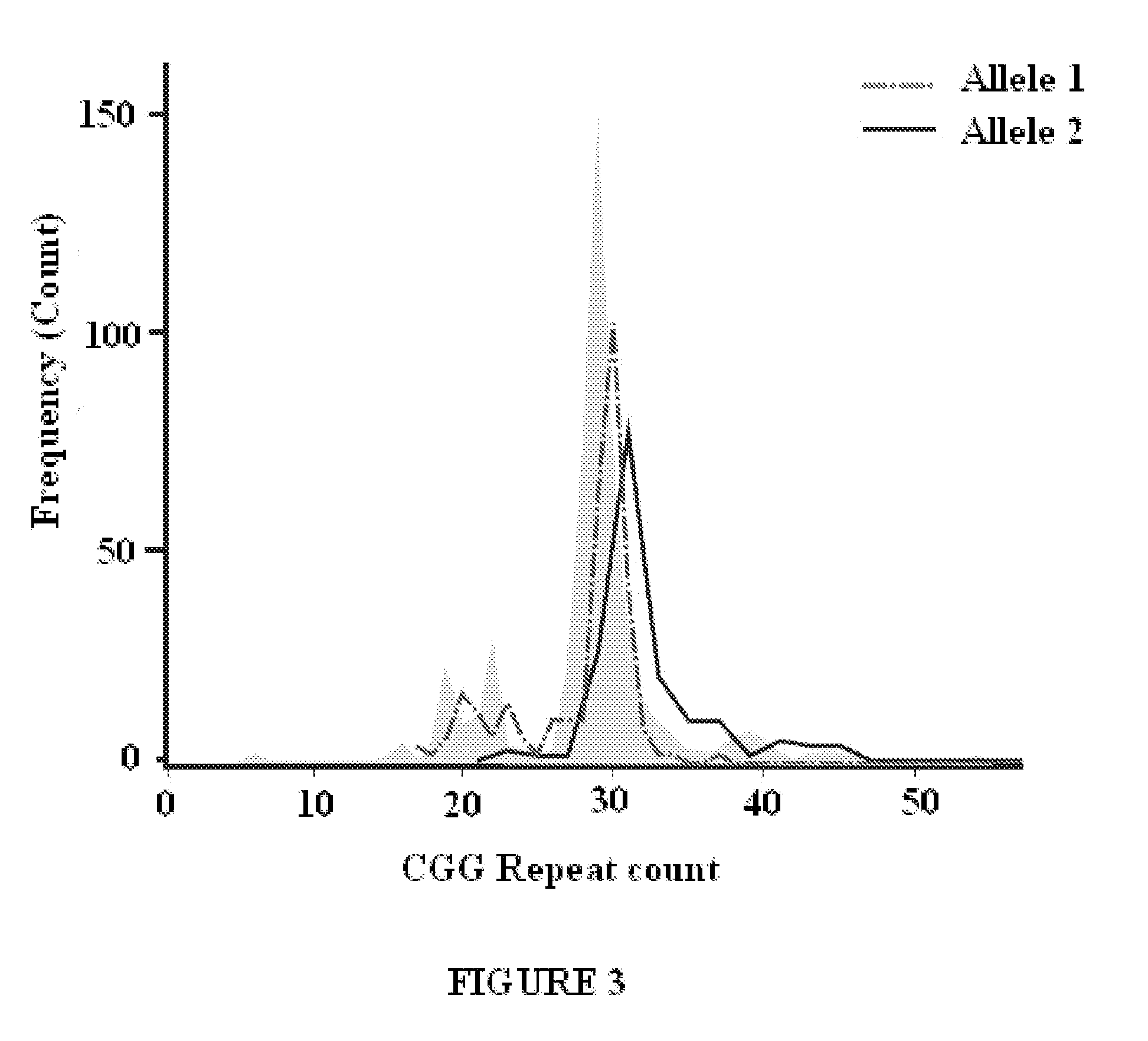Analyzing the FMR1 Gene
a gene and gene technology, applied in the field of analyzing the fmr1 gene, can solve the problems of human female being at a further increased risk of autoimmunity, and increase so as to reduce the risk of autoimmunity, and reduce the degree of autoimmunity
- Summary
- Abstract
- Description
- Claims
- Application Information
AI Technical Summary
Benefits of technology
Problems solved by technology
Method used
Image
Examples
example 1
Discussion of Example 1
[0159]That abnormal autoimmune function can lead to premature ovarian senescence in the form of POF has been known for decades. A possible association between abnormal autoimmune function and milder forms of premature ovarian aging has, however, previously not been made until we suggested such a possibility.
[0160]The association between abnormal autoimmune function and abnormal ovarian function—and, therefore, female infertility, has remained controversial. This fact was confirmed in this study, though, as previously noted, criteria for a positive diagnosis were purposefully set low. It, therefore, is important to reemphasize that patient selection in this study much better defines absence of abnormal autoimmune function than confirms presenece of any (auto)immune abnormalities. The approximately 50% of patients (60 / 119) who were found to have at times very minimal evidence of autoimmune abnormalities can, therefore, not be automatically equated to previously ...
example 2
Discussion of Example 2
[0179]The data demonstrates for the first time a direct statistical association between number of triple CGG expansions on the FMR1 gene and specific ovarian reserve and fertility parameters. Gonadotropin dosages usually increase with decreasing ovarian reserve, though whether such increases in stimulation improve oocyte yield has remained controversial. Oocyte yield, itself, is, however, quite likely the most accurate currently available clinical reflection of ovarian reserve.
[0180]By demonstrating that the number of CGG repeats in young women with what are widely considered basically normal triple CGG expansion sizes (up to 55 repeats) statistically correlates to number of retrieved oocytes, this study further strengthens the previously reported statistical association between triple CGG numbers and ovarian reserve. In these previous studies, ovarian reserve was, however, only indirectly assessed through the laboratory parameters FSH and AMH. In this study, ...
example 3
Discussion of Example 3
[0208]Excessive triple repeat CGG counts on the FMR1 gene increase risk for POF is well established. More recently, milder stages of premature ovarian senescence, often just characterized by laboratory abnormalities, such as baseline FSH elevations, have also statistically been linked to abnormal increases in triple CGG repeat numbers. Such milder ovarian function abnormalities have, like POF, mostly been associated with premutations but, at times, also with lower CGG repeat numbers in the so-called intermediate (“gray”) zone, and at higher levels of repeats within what is considered normal range.
[0209]Because premutation range triple repeats within one generation can expand to full mutations, professional organizations recently have recommended a more proactive approach towards preemptive fragile X testing. The motivations for these recommendations were, however, primarily of genetic nature. Timely maternal testing of women with premutation range CGG repeats ...
PUM
| Property | Measurement | Unit |
|---|---|---|
| size | aaaaa | aaaaa |
| Relative Frequency | aaaaa | aaaaa |
| fragile X mental retardation | aaaaa | aaaaa |
Abstract
Description
Claims
Application Information
 Login to View More
Login to View More - R&D
- Intellectual Property
- Life Sciences
- Materials
- Tech Scout
- Unparalleled Data Quality
- Higher Quality Content
- 60% Fewer Hallucinations
Browse by: Latest US Patents, China's latest patents, Technical Efficacy Thesaurus, Application Domain, Technology Topic, Popular Technical Reports.
© 2025 PatSnap. All rights reserved.Legal|Privacy policy|Modern Slavery Act Transparency Statement|Sitemap|About US| Contact US: help@patsnap.com



